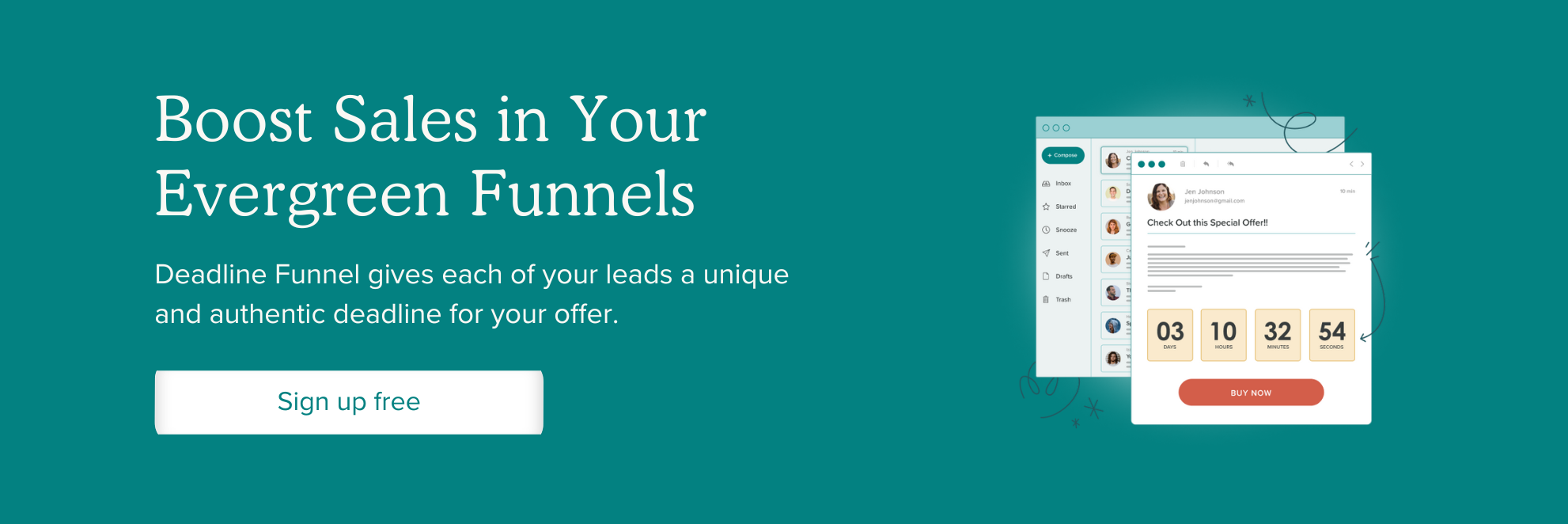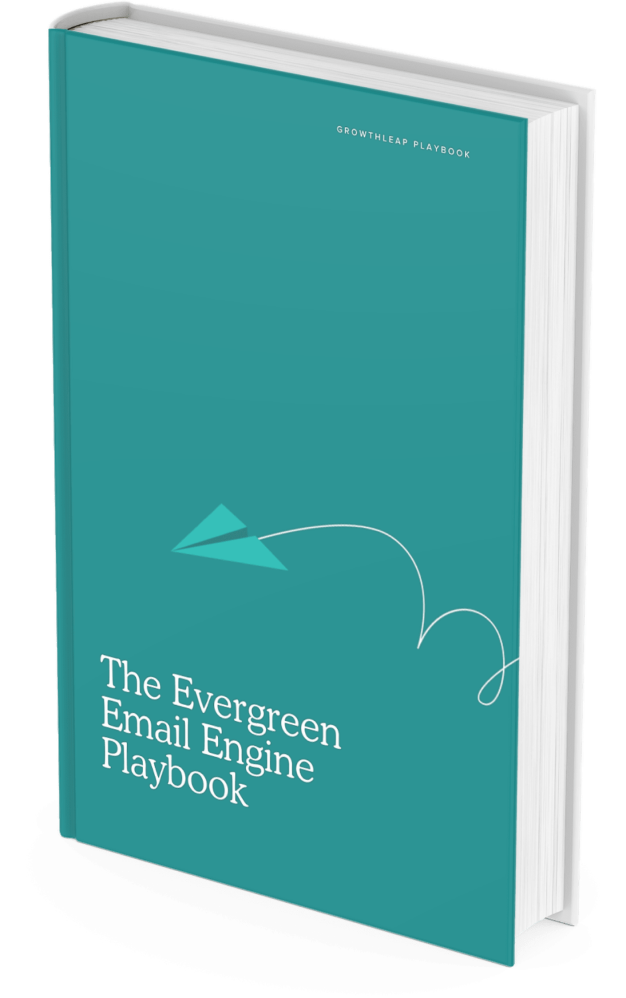
In 2025, more people than ever are looking for flexible ways to earn income outside the traditional 9-5. Blogging remains one of the top choices for building a long-term passive income stream.
While blogging isn’t a get-rich-quick scheme, it can pay off big if you’re willing to put in the time and effort upfront. According to blogger income survey data, 6-10% of bloggers make over $10,000 a month.
So, if you’re passionate about blogging, we’ll walk you through how to start a blog for passive income in this post.
Why blogging is a great passive income opportunity
Passive income is the money you earn with minimal active involvement. Unlike a regular 9-5 job, where you trade your time for money, passive income lets you build something once and earn from it for a long time. For example, think rental properties, dividend stocks, or in this case, blogs.
Blogs don’t often seem like the typical passive income stream, because it isn’t always 100% passive. Rather, it becomes more passive over time.
Many bloggers report that the progress was slow at first, but their incomes started to snowball once their content library grew, even to the point that they were able to convert blogging into a full-time income.
Once a blog post is live, it can keep generating traffic for months or even years (especially if it ranks well on Google). One Reddit user shared he made $20,000 in passive income with a single blog post by targeting high-converting keywords and monetizing through affiliate links.
You can also monetize your blog posts through display ads, digital products, or sponsored posts.
Step 1: Choose a profitable niche
Before you even sit down to write your first blog post, you need to decide your blog’s main focus. This step is important because the niche you choose will determine how easily you can attract traffic, what kind of products or services you can promote, and how much income you can make.
Here are a few factors that make a niche profitable.
Characteristics of a good niche

- High demand, low competition
The niche you choose should cover topics that people are actively searching for. At the same time, it shouldn’t be overly saturated with big-name blogs.
Otherwise, the chances of your blog posts making it to the first page of Google search results would be very low. So, find a niche where you’ll have an easier time ranking in search results.
- Evergreen topics
Unlike trending topics, which spike in interest and then fade away, evergreen content always stays relevant. For example, “how to save money,” “tips for new parents,” or “healthy meal prep for busy people” are content that will be just as useful today as it will be 5 years from now.
Once you write a blog post on such topics, all you have to do is update them occasionally to keep them fresh, and they’ll attract consistent traffic over time.
- Monetization potential
A niche might be fun to write about, but if there aren’t ways to earn from it, it’ll be tough to turn your blog into a sustainable passive income stream. So, look for niches that give you more opportunities to earn money.
For instance, personal finance, fitness & wellness, travel hacks, tech and gadgets, and online business are niches with tons of opportunities for affiliate products and sponsorships.
On the other hand, free hobby blogs and daily journal blogs might be personally meaningful, but are hard to monetize.
- Something you won’t burn out writing about
While you don’t have to be an expert, it helps if you enjoy the things you write about. After all, you’ll be spending a lot of time creating content around the niche you choose.
So, if it isn’t something you are passionate about, you’ll sooner or later want to give up.
How to research a niche
Now that you have a few niche ideas, it’s time to find out if they will work.
Go to Google Trends and check if the demand for topics in your niche is growing or declining. You want a niche with a steady or rising trend. Also, use Mangools’ keyword research tool to see how many people are searching for your niche keywords, and if these keywords are low competition.
In addition, look up blogs in your target niche, and figure out:
- What topics are they covering?
- What’s working? (Check their top posts, comment sections, and social shares.)
- What are they not doing well?
The gaps you see in your competitor’s blogs are your chance to stand out. For instance, if most parenting blogs are focused on babies, maybe there’s an underserved audience of parents with teens.
Or, if most travel blogs talk about luxury destinations, you might want to focus on writing about budget travel for students.
Step 2: Set up your blog
You don’t have to be a tech genius to build your blog. All you need are the right tools, and you can have your blog up and running in less than an hour.
Pick a domain name and a hosting provider
Your domain name is going to be in your blog’s web address. So, you want to keep it simple, easy to remember, and ideally related to your niche. Avoid hyphens and numbers, and use keywords if it feels natural. For example, a clear and concise name like TheBudgetMom.com is a great choice for a finance blog that targets women.
Once you have a name in mind, the next step is to choose a hosting provider. This is the service that will store all the content of your blog and deliver it to a visitor when they search your blog name.
Bluehost, SiteGround, and HostGator are some beginner-friendly hosting platforms you might want to consider. Most hosting platforms will also help you register your domain during setup.
Install WordPress and choose a theme
When it comes to blogging platforms, WordPress is often regarded as one of the best if you’re serious about turning your blog into a passive income stream. After all, it is highly customizable and used by over 40% of the top 10 million websites in the world. Plus, it’s super beginner-friendly, and most hosting services will let you install WordPress with a single click.
After installing, it’s time to pick a design template for your blog. You should choose a theme that’s responsive (on mobile devices and desktop), SEO-friendly, and fast-loading. Two great beginner-friendly themes you might want to consider are:
- Astra – It’s lightweight, fast, and super customizable.
- GeneratePress – It has a clean design, is SEO-optimized, and offers great support.
Both themes have free and premium versions. So you can start small and scale as your blog grows.
Essential plugins to install
Plugins are the extra features you can add to your blog. Though there are tons of plugins and extensions available on WordPress, there are three essential ones you must not miss.
- Yoast SEO – It will help you write search engine-friendly content so you can rank better on Google.
- Google Analytics – Connect your blog to Google Analytics, and it will help you track traffic, popular posts, and user behavior.
- WP Rocket – It speeds up your site by caching content, which improves load time and enhances user experience.
Pro tip: Use UptimeRobot, a free uptime monitoring tool, to ensure your site is up and running 24/7. The tool will alert you whenever there’s downtime so you can quickly fix the issue to avoid losing visitors, credibility, and revenue.
Step 3: Create high-quality content
Relevant and engaging content forms the core of any successful blog, and it becomes even more important when you’re aiming for passive income. The better your content, the more traffic you’ll attract, and the more opportunities you’ll have to monetize.
Plan your content strategy
Before you start writing your first blog post, take time to plan a few topics you would like to write about. Think about your audience’s interests, and come up with topic ideas that would solve real problems or answer questions your readers are Googling.
Ahrefs and Google Keyword Planner are two keyword research tools that can help you find topic ideas. In addition, you can also use AnswerThePublic to discover high-volume search terms with low competition.
Browsing Reddit threads, Facebook groups, and Quora is also a great way to see what your target audience is talking about, so you could frame your content surrounding these discussions.
Write engaging blog posts
Now that you have ideas, it’s time to start writing content that keeps people reading. Here are some proven tips.
- Make sure your headline shows the value your post is offering. For example, use “10 Ways to Save $1000 Every Month” instead of “10 Tips About Budgeting.”
- Use subheadings and bullet points to break up the text. This makes your post easier to skim through and digest.
- Don’t just describe the problem. Offer actionable advice that your readers can use to solve the problem.
- Add internal links to other blog posts on your site, and external links to high-authority sources wherever necessary.
Use content formats that perform well
Certain content formats tend to perform better than others when it comes to driving traffic and engagement.
- Listicles – Numbered posts like “30 Conversion Rate Optimization Tips” are easier to skim and are packed with value, which is why they appeal to people.
- How-to-guides – Step-by-step guides are one of the most searched content formats, making them the perfect choice to cover evergreen topics. This very blog post you’re reading is a great example of a how-to guide.
- Case studies – People connect with stories more than facts. So when you show them how a certain technique or product helped a person or a group of people, they’re going to be able to relate to it more. For example, a majority of people would choose to read “How I Grew My Blog To 10K Visitors In 3 Months,” over “How To Grow Your Blog Traffic In 3 Months.”
- Infographics – Visual content often gets shared more on social media. It is also great for breaking down complex information.
As you create content, always ask yourself, “Is this genuinely helpful?” “Would I share or bookmark this if I read it on someone else’s blog?”
If the answer is yes, you’re on the right track.
Step 4: Drive traffic to your blog
Creating good content is only half the game. The other half is getting people to see your posts, because without traffic, your blog won’t make much money. Here is how to start bringing in consistent visitors to your site.
Master SEO basics
Search Engine Optimization (SEO) is going to be your lifelong companion if you want to earn passive income from blogging. When done right, it can send you free, targeted traffic for months or even years. And for this, what you should be essentially doing is:
- On-page SEO – Optimize your blog posts by adding relevant keywords in the titles, meta descriptions, subheadings, and URL slugs. Yoast SEO can guide you through this step as you write.
- Backlinks – When other websites link to your blog, Google sees your content as trustworthy. So, reach out to bloggers for collaborations or link swaps, share valuable content on forums like Reddit and Quora, and write guest posts on related blogs.
Learning SEO can take some time, but once your posts start ranking, traffic can roll on autopilot.
Leverage social media
Social media is a great way to get that traffic coming, especially when your blog is new and SEO hasn’t kicked in yet.
Use Pinterest, Instagram, or Facebook if you’re writing in visual niches like travel, parenting, DIY, or food, and X or LinkedIn for tech, finance, or productivity niches. You might also want to join relevant groups and forums to expand your reach.
To save time, use automation tools like Buffer, Hootsuite, or Tailwind that help schedule posts and track performance across multiple social media platforms.
Build an email list
Unlike social media or SEO, your email list is something you own, and it can become your most loyal audience over time. So start building your list early by offering lead magnets like free eBooks, mini-guides, printables, checklists, or even an email course.
You can draw people into signing up for your email list by strategically placing signup forms throughout your site, such as at the end of your blog posts, in the sidebar, or as a pop-up.
Deadline Funnel’s Website & On-Page Pop-Up Widget can help create eye-catching, time-sensitive pop-ups that boost conversions by adding urgency. Once you’ve got subscribers, send regular emails with helpful tips, new content, or exclusive offers.
Email marketing platforms like Mailchimp and ConvertKit are great for beginner bloggers and come with automation features that will help you schedule emails and track their performance to ensure you’re keeping your readers engaged.
Sometimes, your emails may end up in your subscribers’ spam folder, which is not something you want. Two tools that can help avoid this, and increase your deliverability rate are EmailListVerify which cleans your list of invalid or risky addresses, and Warmup Inbox which gradually warms up your sending reputation.
“A clean, warmed-up email list doesn’t just improve deliverability, but also protects your sender reputation and ensures your messages reach the people who want to hear from you.” – Nikola, Email Marketing Specialist at Deadline Funnel
Step 5: Monetize your blog
Once you’ve got traffic coming in, it’s time to turn those pageviews into profit. There are several ways to make money from blogging, and most of them can become passive income streams over time.
Affiliate marketing
Affiliate marketing is one of the easiest and most popular ways to earn through your blog. You essentially recommend products, and when someone purchases using your affiliate link, you earn a commission. For example, if you run a travel blog, you can recommend travel gear or booking services to earn commissions.
To start affiliate marketing, join beginner-friendly programs like Amazon Associates, ShareASale, and Rakuten Marketing. In addition to these platforms, there are niche-specific affiliate networks that often pay higher and have more relevant products for your audience.
Always remember that readers can easily spot forced or salesy content from miles away. So be honest in your reviews and focus on recommending products you genuinely use or believe in.
“The most successful affiliate marketers aren’t just selling. They’re building trust. When your audience knows you only recommend what truly works, clicks and conversions come naturally.” – Alexandre, Marketing Specialist at Deadline Funnel
Display ads
While display ads aren’t the most lucrative option early on, they are 100% passive.
Start with Google AdSense. It is easy to set up and great for beginners, though the payouts are modest. Once you reach a higher traffic (usually around 50K sessions/month), you can switch to higher-paying networks like Mediavine or Raptive. These platforms give you significantly better RPMs (revenue per 1,000 impressions) and more control over ad placement.
Create digital products
If you’re aiming for higher profit margins and complete control over your income, digital products are the way to go.
You can create and sell eBooks, printable planners or templates, mini-courses, workshops, membership content, etc., and they work best when they’re tailored to your niche. For example, a personal finance blog might want to sell a budgeting spreadsheet, and a parenting blog could offer a printable kids’ routine chart.
You can sell your digital products on platforms like Gumroad or Podia.
Sponsored content
As your blog grows and your brand strengthens, you can start working with brands for sponsored posts, reviews, and collaborations. However, to reach this stage, you’ve got some work to do.
- Build domain authority by consistently publishing quality content.
- Grow your email list and social media presence, because brands love engaged audiences.
- Create a Media Kit that showcases your traffic, audience demographics, and engagement metrics.
Furthermore, you don’t have to wait for brands to come to you. Reach out to them with a clear pitch on how you can promote their product in an authentic, helpful way.
Step 6: Automate and scale your blog
Once your blog is bringing in traffic and generating income, it’s time to move from hustling solo to building a system that works for you, even when you aren’t online.
Automate content promotion
Promoting your content consistently can be time-consuming. So, use social media schedulers like Buffer, Tailwind, or Later to plan and auto-post across platforms. Schedule a week’s worth of content in one go, and it will free up hours of manual posting.
Another thing you can do to save time is repurpose old content into new formats. For instance, if there is a blog post that’s performing well, turn it into short videos, carousels, or quote graphics for Instagram or TikTok. You can also turn tips into an email newsletter or infographics.
Outsource tasks
Delegating is an essential part of scaling and growing. Consider outsourcing tasks like content writing, graphic design, and technical maintenance to freelancers. You can use platforms like Upwork, Fiverr, or TopTal to find reliable professionals. Nevertheless, start small by outsourcing maybe just one or two tasks, and then scale up as your income grows.
Diversify revenue streams
To truly grow your blogging business, don’t rely on just a single income source. Multiple revenue streams will give you more stability and a higher earning potential. So, consider launching additional blogs in different niches. Since you’ve already mastered one niche, all you have to do is replicate your system in a new one.
You can also create a membership site for exclusive content, downloadable resources, or community access for a monthly fee.
Common mistakes to avoid when starting a blog for passive income
Even with the best intentions, many new bloggers trip up early on. The good news is that these mistakes are easy to avoid once you know what to watch out for.
Expecting quick profits
One of the biggest misconceptions is that blogging will make you rich in a few months. In reality, most successful bloggers take 6–18 months to see meaningful income, and that’s with consistent effort.
So, think of your blog as a long-term investment, and treat it like a real business, and the rewards will follow.
Picking a niche just for the money
It’s tempting to chase profitable niches like finance or tech, but if you have zero interest or knowledge, you will get burned out sooner or later. In addition, readers can tell when content lacks authenticity.
So, write about topics you’re passionate about, have some expertise in, and have monetization potential.
Neglecting SEO or site maintenance
You don’t need to be an SEO expert, but completely ignoring it will stunt your blog’s growth. Many beginners skip things like keyword research, site speed, or mobile optimization, and that leads to low traffic and poor rankings.
Learn basic SEO early on, and don’t forget to update plugins, check for broken links, and keep your site running smoothly. It builds trust with both users and Google.
Tools and resources for blogging success
Smart bloggers use tools to save time, stay organized, and create better content. Here are some tried-and-true resources to help you run your blog like a pro.
Content and SEO tools
There are many SEO and content tools on the market, and these are just a few of our favourites. Make sure you check their user reviews to find the best fit for your needs. Grammarly
Grammarly improves writing quality by catching spelling and grammar mistakes, improving readability, and making your writing more polished. It is especially helpful if you’re writing multiple posts a week.
Ahrefs
A powerhouse for SEO, Ahrefs helps find high-traffic keywords, spy on competitors, and track your blog’s search rankings. It’s an investment, but one that can seriously boost your traffic over time.
Design tools
You don’t have to be a graphic designer to have a beautiful blog. Here are a few tools that can help you make your site stand out without breaking the bank.
Canva
Perfect for beginners and pros alike, you can use Canva to easily create blog banners, Pinterest pins, infographics, and social media content, even if you have zero design experience.
Unsplash
If you need royalty-free images for your blog posts, Unsplash offers high-quality stock photos for free, and they look way better than generic clip art.
Productivity and automation
Staying organized is key to running a successful blog, especially as your blog grows. These tools help you automate tasks so you can save time while staying on track.
Trello
Trello helps you stay organized with visual boards and checklists. You can use it to plan your content calendar, track writing progress, and keep your workflow streamlined. It is particularly helpful if you’re managing multiple blogs or team members.
Zapier
Zapier automates repetitive tasks like publishing posts to social media or saving email subscribers to a spreadsheet. You can connect Zapier with your favorite tools and let them work together without manual input.
Final thoughts: Start your blog today
Starting a blog might feel overwhelming at first, but remember that every successful blogger started exactly where you are now. The truth is that blogging takes patience, consistency, and a smart strategy. You’ll need to show up regularly, learn as you go, and stay focused even when traffic and income are slow to start.
The good news is that blogging compounds. One post becomes ten. Ten posts bring in a trickle of traffic. That trickle becomes a steady stream, and over time, your blog can turn into a powerful income-generating asset that works for you even when you’re offline, traveling, or asleep.
So if you’ve been thinking about it, take the first step today. Remember, you don’t need to have it all figured out. You just need to begin!





